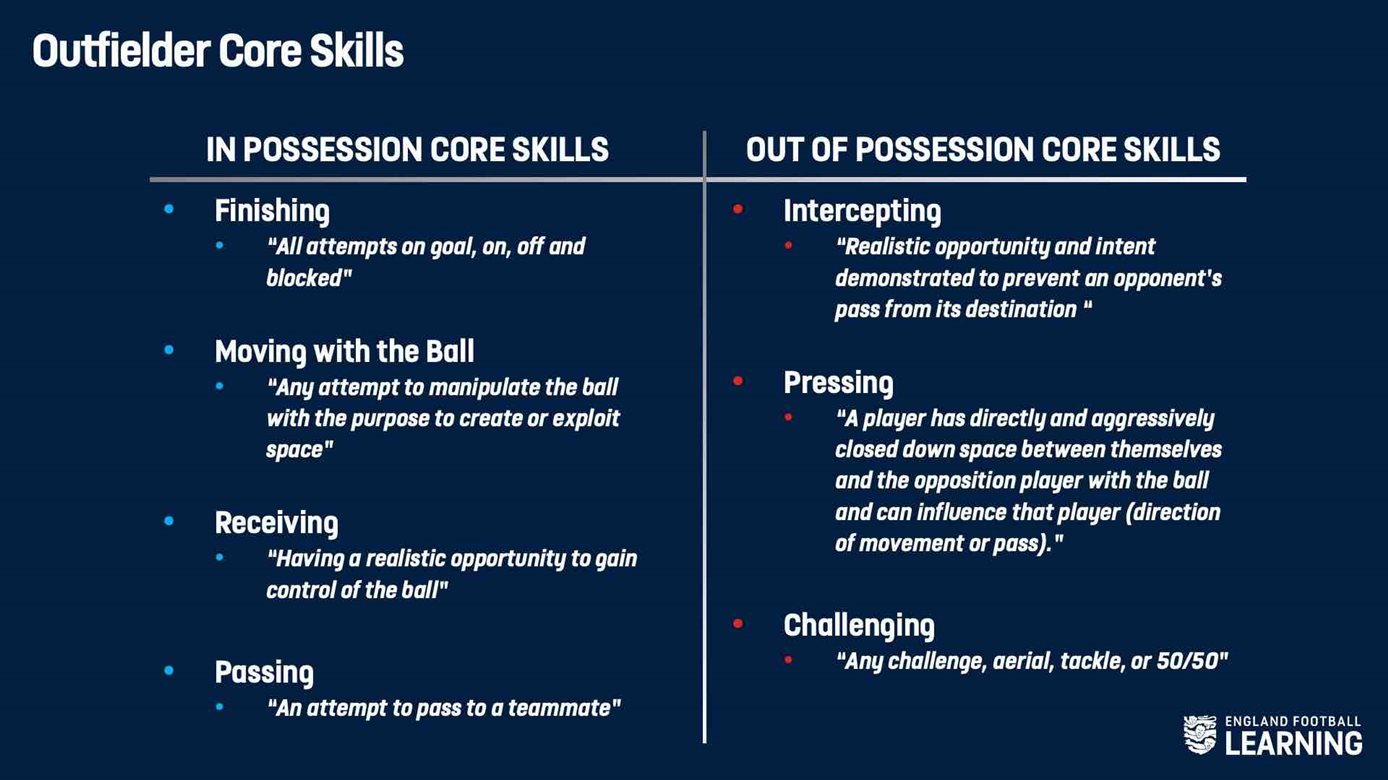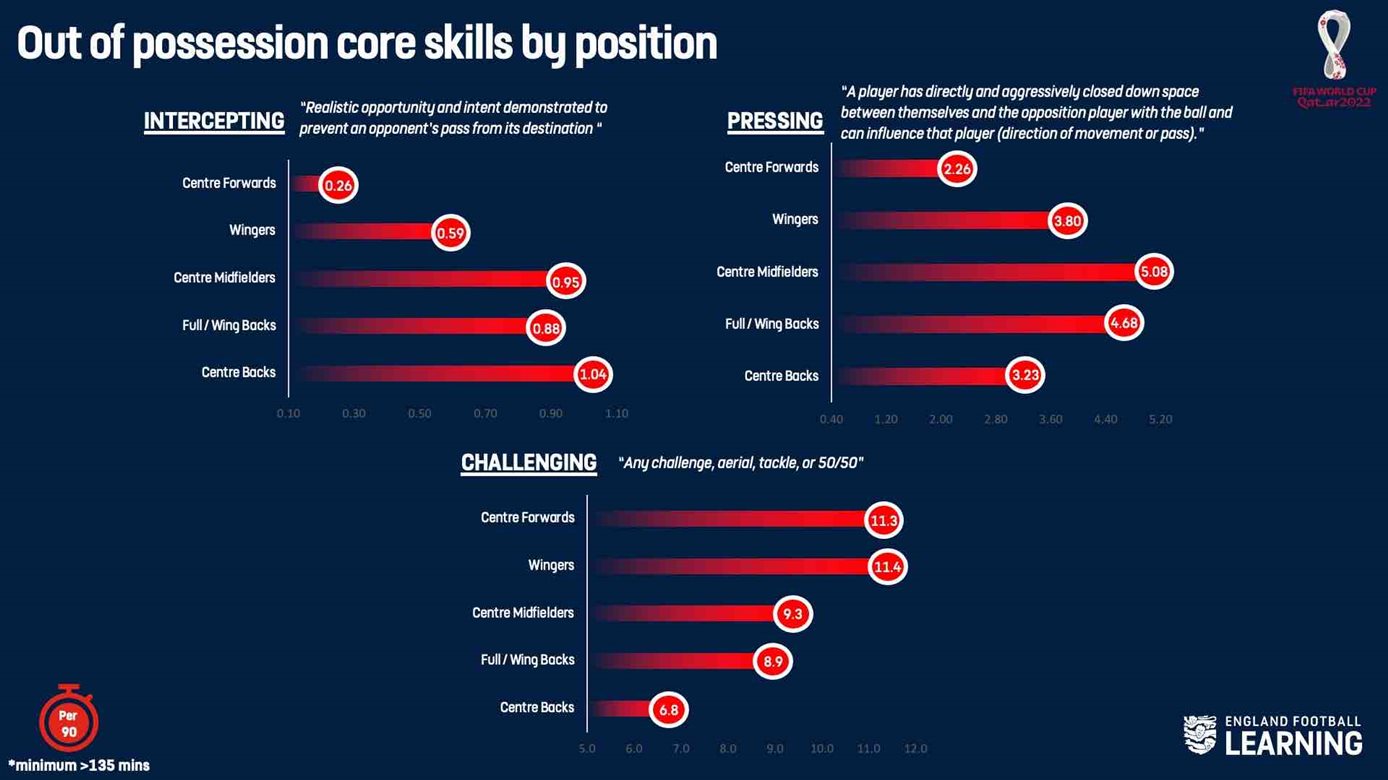No matter where or who we coach, it is important we give our players the opportunities to experience different playing positions on the pitch, to allow them to develop and to become more skilful. If we afford our players these experiences, they will be able to master the many varying game situations they will be faced with through their playing pathway. But to afford our players with these experiences, we ourselves have to understand the benefits and trade-offs of our players playing as a centre back compared to playing as a centre forward.
During the World Cup Game Insights Analyst Katie Sorenson explored the opportunities players got throughout the tournament to perform the in possession and out of possession core skills. The in possession core skills we were able to monitor were finishing, moving with the ball, receiving and passing. The out of possession core skills we analysed were intercepting, pressing, challenging. We know these core skills happen a lot and all over the pitch.

We grouped all outfield players into these five positions to analyse core skill frequency.
- Centre backs
- Full/wing back
- Centre midfielder
- Wingers
- Centre forward
Do certain players get more opportunities to perform these in possession and out of possession core skills based on where on the pitch they play?
Out of Possession Core Skills

Our analysis of the World Cup highlights how different playing positions have varying opportunities of being able to perform the three out of possession core skills.
Centre backs (1.04 per 90), full backs/wing backs (0.88 per 90) and centre midfielders (0.95 per 90) all have more opportunities to intercept during the game compared to wingers (0.59 per 90) and centre forwards (0.26 per 90). This may demonstrate that interceptions happen more so in the defensive half, as to stop the opposition from penetrating and getting into goalscoring positions in the attacking third. This is a consideration for practice design, as if interceptions happen more so in the defensive third and midfield third, is this where we should look to put these practices on, to ensure we replicate the game?
The data shows us that pressing happens all over the pitch. Although centre midfielders have the most opportunities to perform these pressing actions (5.08 per 90), centre forwards still have ample opportunity to press in the game too (2.26 per 90). What may seem quite surprising, is the high frequency of challenges that centre forwards and wingers get to challenge. We have defined a challenge as any aerial, tackle or 50/50. Centre backs get only around half the opportunity within the game to make challenges compared to these forward players. But the thing to consider here is usually two centre backs will mark one striker, especially within the commonly used 433 formation. This means that the roles and responsibilities defensively are shared out between the two defenders to compete with the striker.
Coaching Considerations
The opportunity that you are giving your players to experience different positions on the field of play can help widen their view of the game. The areas in which a centre back receives the ball and looks to make passes is very different to that of a wide player. Ensuring we do not pigeonhole our players is important within their development, to help them master the core skills and to become more skilful.
Do you think the players in your environment get similar opportunities to perform these core skills? And if not, what are some of the methods you might consider to provide these opportunities?
Curious how this looks for the in possession core skills? Check out the blog below:
https://community.thefa.com/coaching/b/insights-analysis-blogs/posts/playing-position-impact-on-opportunities-to-perform-in-possession-core-skills


